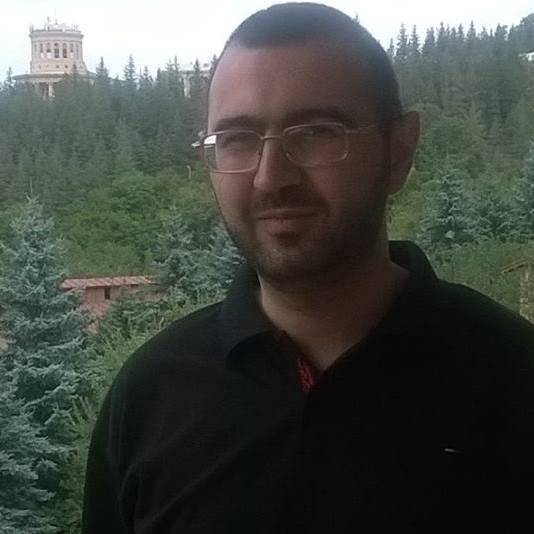
January 22, 2020, by Emma Putland
Arman Shokhikyan: Taize Community as a Visionary of Human Flourishing
Introduction: Well-being and Belonging
When we speak about well-being, the idea of belonging is central. A lack of well-being is very often closely connected with the lack of any sense of belonging, a sense of isolation. To belong is to know that there is a place where you do not have to earn your position as it is guaranteed. You are at home and you do not need to work to be there.
Belonging is a complex issue: we belong to our families, our faith communities, to our country and culture. Each of us lives in a tapestry of different layers of belonging and hence has different levels of motivations and visions. In this regard, religious communities with their life rhythms, routine and rituals shape and give a certain motivation and vision. This blog post examines the case of the Taize community and explores how this ecumenical monastic order in central France seeks to develop a sense of belonging within their community culture.
Taize Community in General
Founded in 1940 by Roger Schütz, a Reformed Protestant, the Taize community soon started to attract many young people. Today each year over 100,000 people visit Taize to share in the community’s way of life. Taize offers very basic things such as simple healthy food and shelter, praying three times a day, and volunteering work.
Different people join the community at different levels. Although the main administrative roles are on the brothers, the significant part of community life is organized and preserved by the male and female volunteers. Taize consists of different layers of community:
- Brothers (and some nuns)
- Volunteers (male and female)
- Pilgrims (male and female)
- Guest (church leaders, ministers)
Although there are different categories of people inside the community, all of them follow the same lifestyle and rule of life. The unwritten law of Taize is that if you are in the community, you are expected to pray with others and undertake work that sustains the community’s life (be it in the kitchen or church or gardening).
Worship Style at the Taize: Contemplative Music and Silence
The center of the community’s life is prayer organized three times a day. The prayer services are primarily contemplative songs that are sung over and over again like waves crashing over the congregation. To get a taste of what this sounds like, try one of these.
- Tu Sei Sorgente Viva
https://www.youtube.com/watch?v=rYR7vtOk3-s
- Meine Hoffnung
https://www.youtube.com/watch?v=kBmgOnQM3Ws
- Nothing can ever come
https://www.youtube.com/watch?v=nmi3cD2zshg
- Laudemus Deum
https://www.youtube.com/watch?v=rDplBU-mCoU
- Jesus le Christ
https://www.youtube.com/watch?v=AqoYsauFa2I
- Bonum est confidere
https://www.youtube.com/watch?v=RPNzZwBYZrc
- Toi, l’au-delà de tout
https://www.youtube.com/watch?v=U8cbNAwwQhU
Alongside music is silence which is kept for 7-10 minutes during each service. During the prayer songs, people stay silent. While there is no standard conceptualized theory what this practice of silence means, a visual and audio experience says to me that practicing silence at Taize fosters the power of listening by calming down the pressures of everyday life and prioritizes the listening/giving attention to over the speaking. While speaking can be regarded as self-reflection/expression, listening is about focus and attention. Practice of silence imagines the flourishing as spiritual and bodily focus (you do not move your eyes or mouth) and attention to one’s physical, social and spiritual conditions.
Taize and a Sense of Community
Taize creates a community with a setting. It marks off a piece of the earth, a village, puts boundaries around it and within their parameters performs certain practices that carry with them a story about what the good life looks like. While Taize is a religious organization, it is not primarily a belief system but first of all a community with its distinctive practices. Taize’s community vision is articulated as a ‘parable of community’. The community itself aims to reflect its parable of bringing different people of various strands of Christianity together. One of the keywords at Taize is trust. A community is formed once there is a basic trust between people. Contact with the other at Taize is pursued not from an individualistic end but the perspective of collective prayer and communal work. Unlike the urban environment where human connections are made primarily out of financial gain, social advancement or romantic love, Taize’s simple lifestyle, common prayer, and daily collective household projects naturally foster to form interdependent human relationships. The belonging and good life is imagined and enacted based on the basis of asking help and giving that help to others in a communal project.
Overall, the Taize community serves to foster well-being by way of looking into the depths of Christian tradition (common to all churches) to find there themes and motivations that reminds us we are responsible not just for immediate neighbors but our human brothers and sisters and the world in which we live.
Taize services are organized all over the Europe and North America. If you would like to attend of the services, contact the local church for the details.
If you would like to find out more about the Taize community, please visit their website: www.taize.fr
Arman Shokhikyan
PhD candidate,
Theology and Religious Studies Department
University of Notitngham

[…] Taize Community as a Visionary of Human Flourishing […]